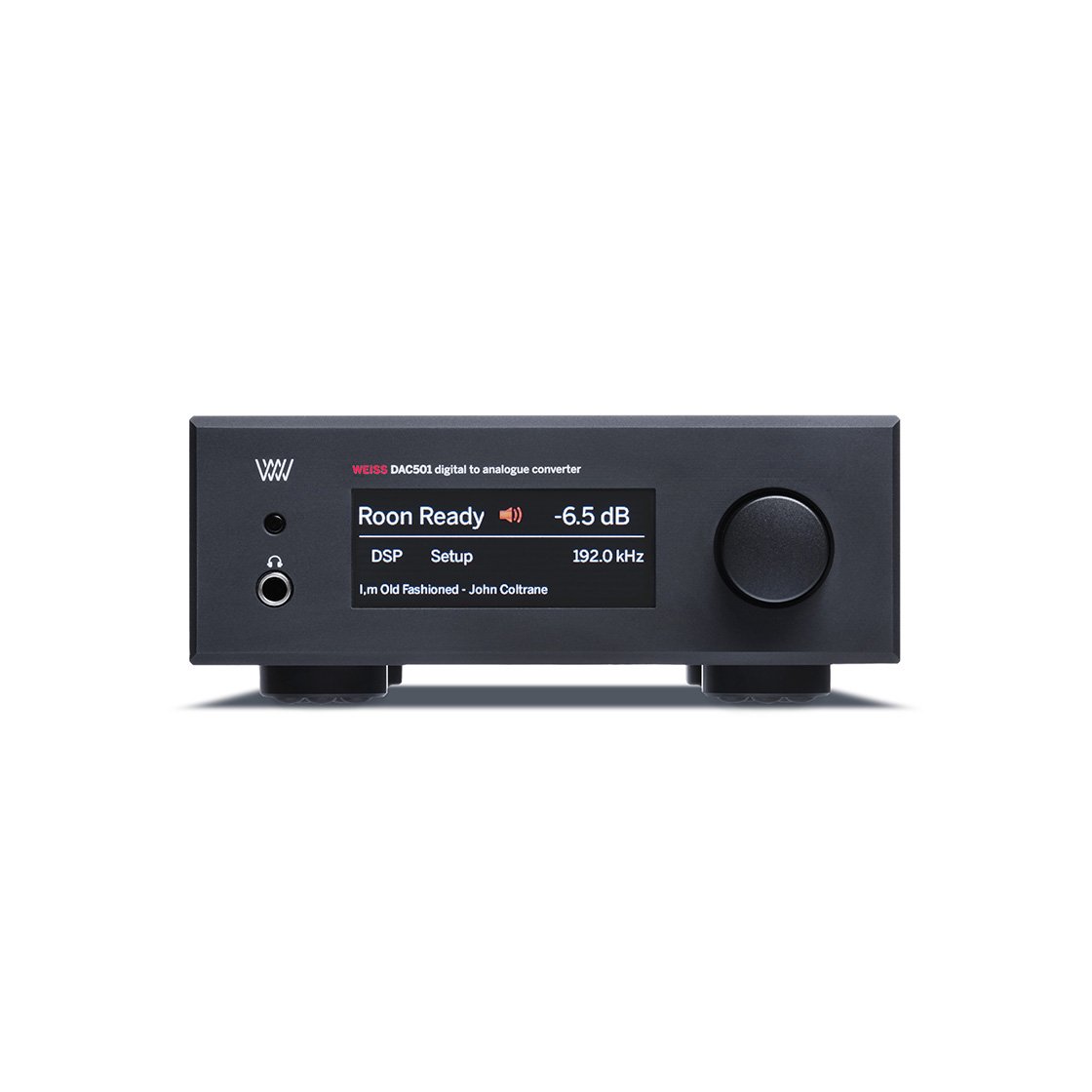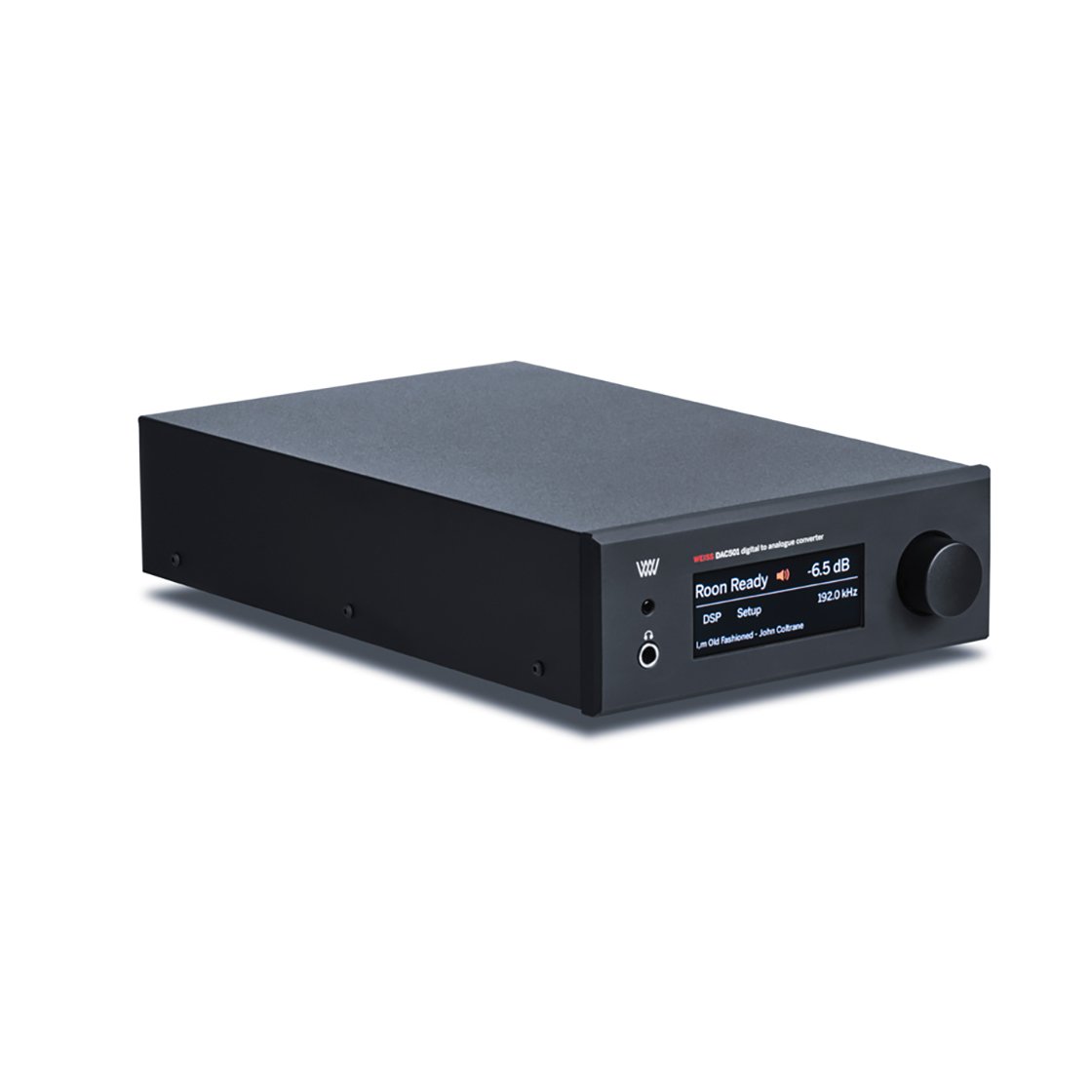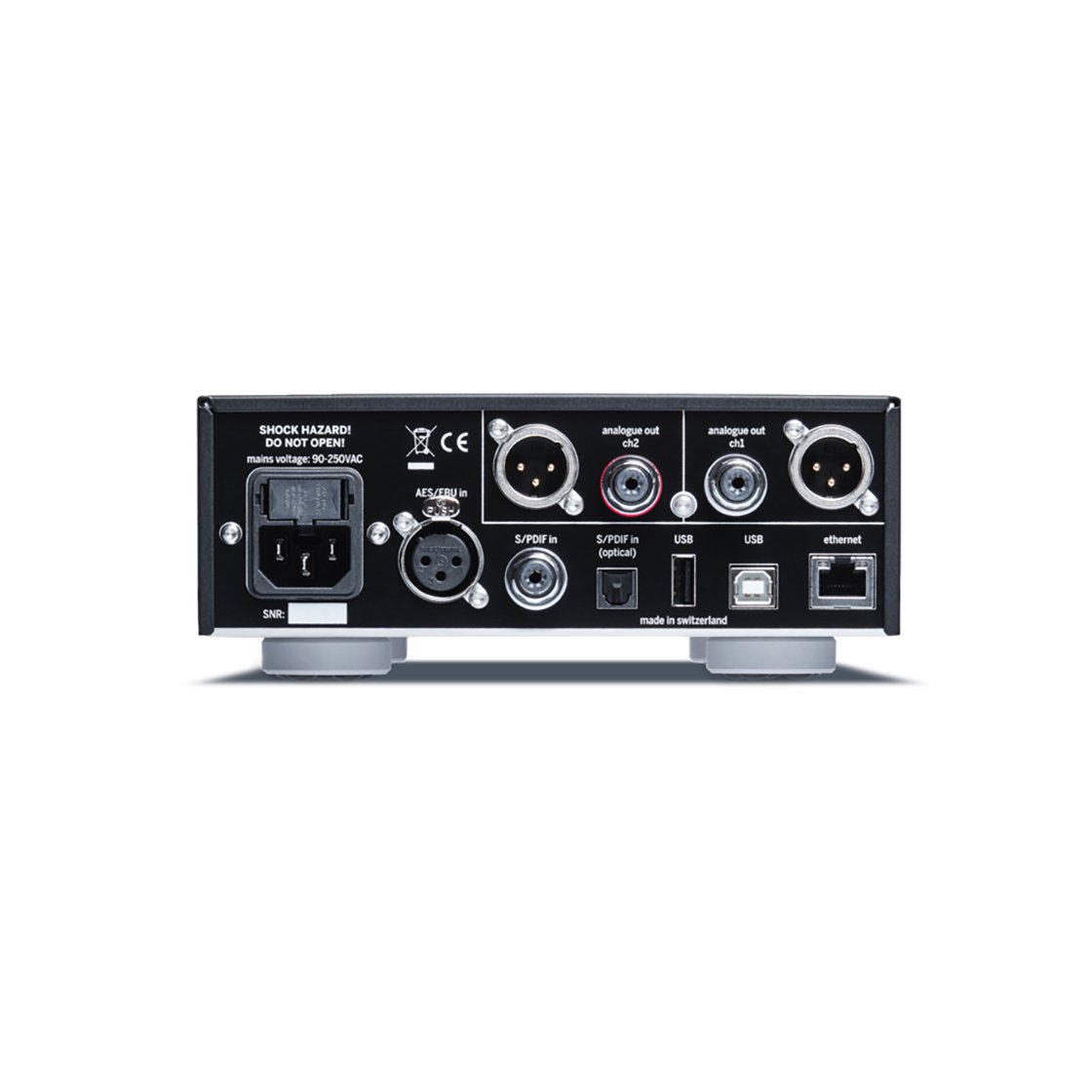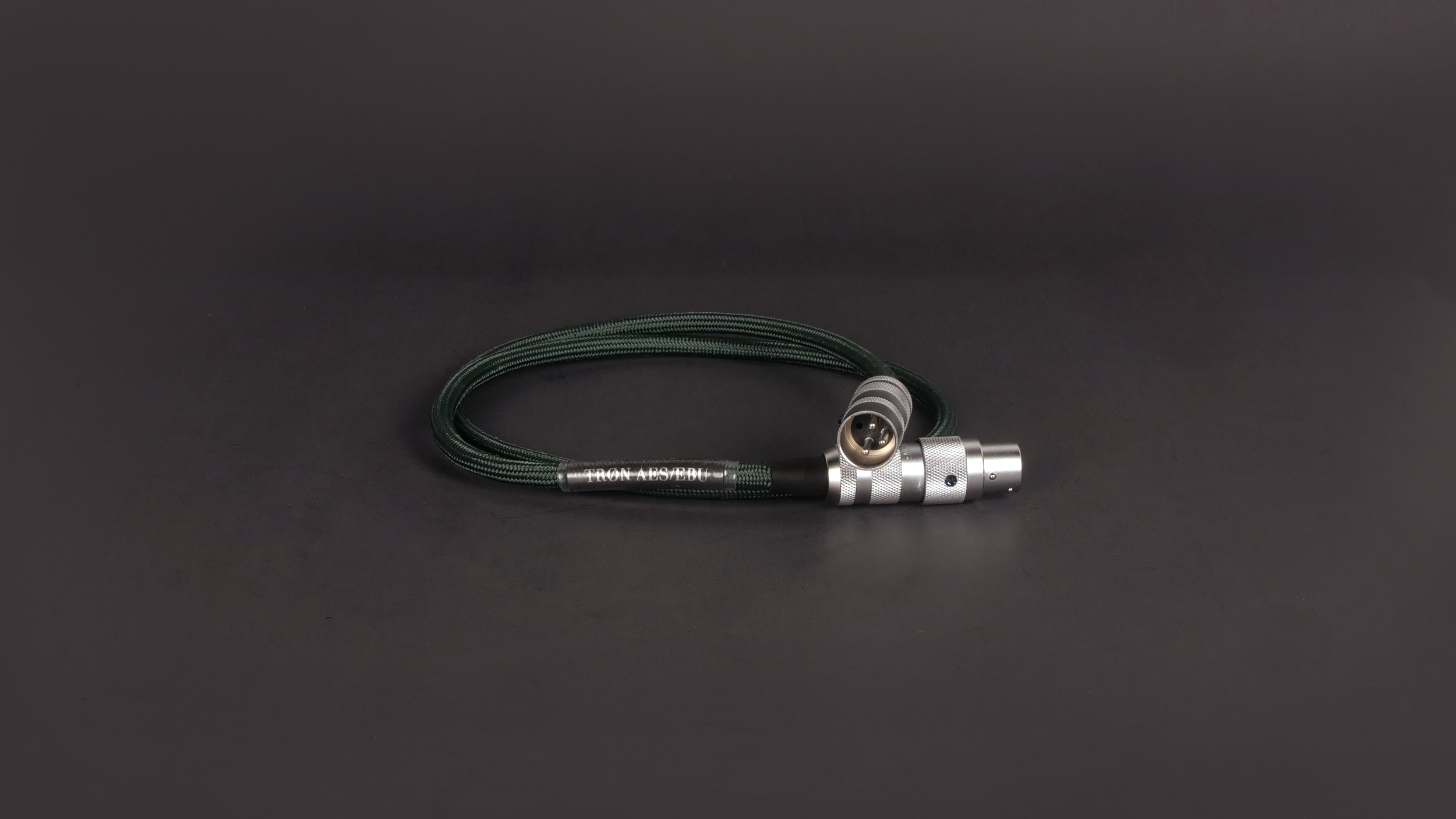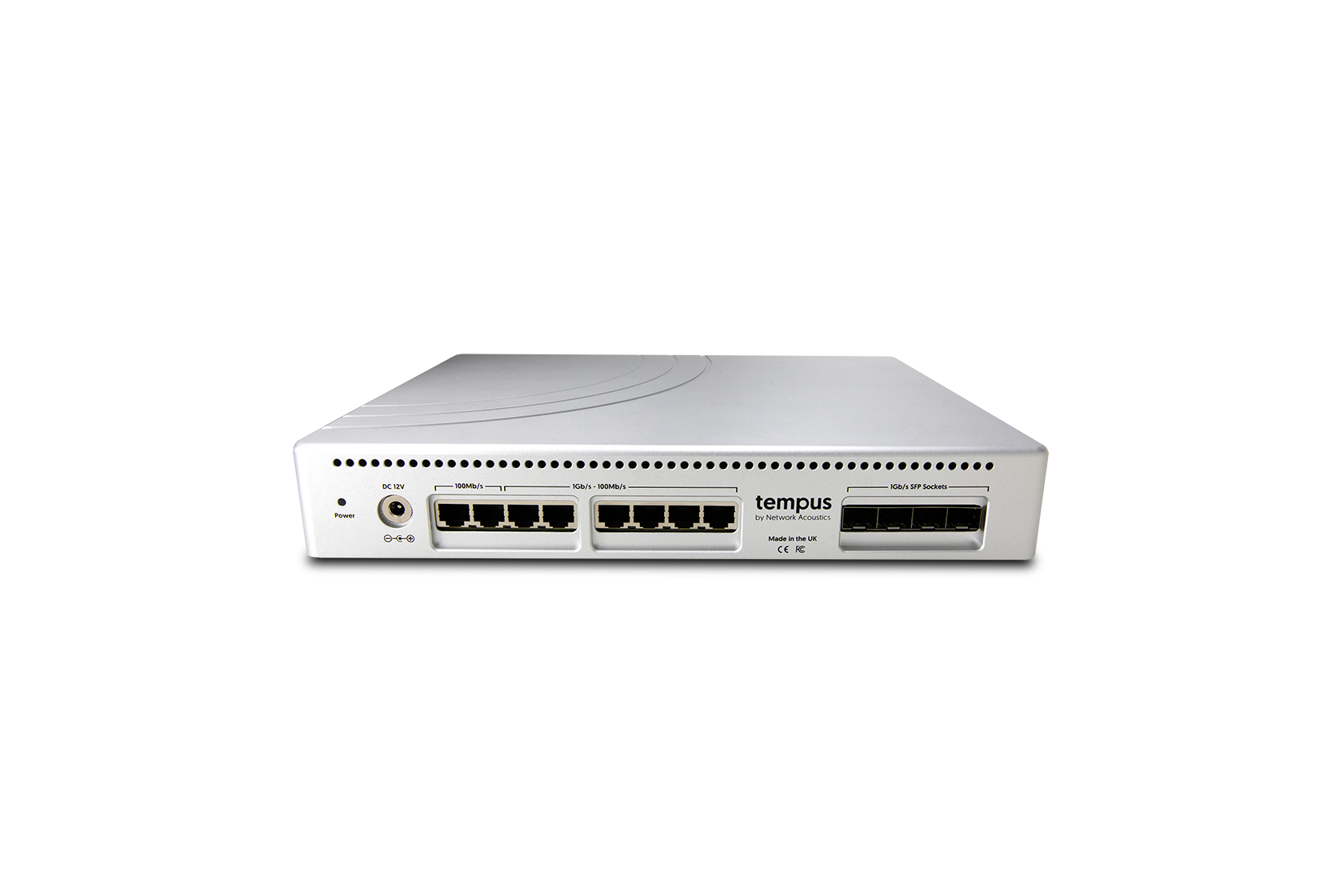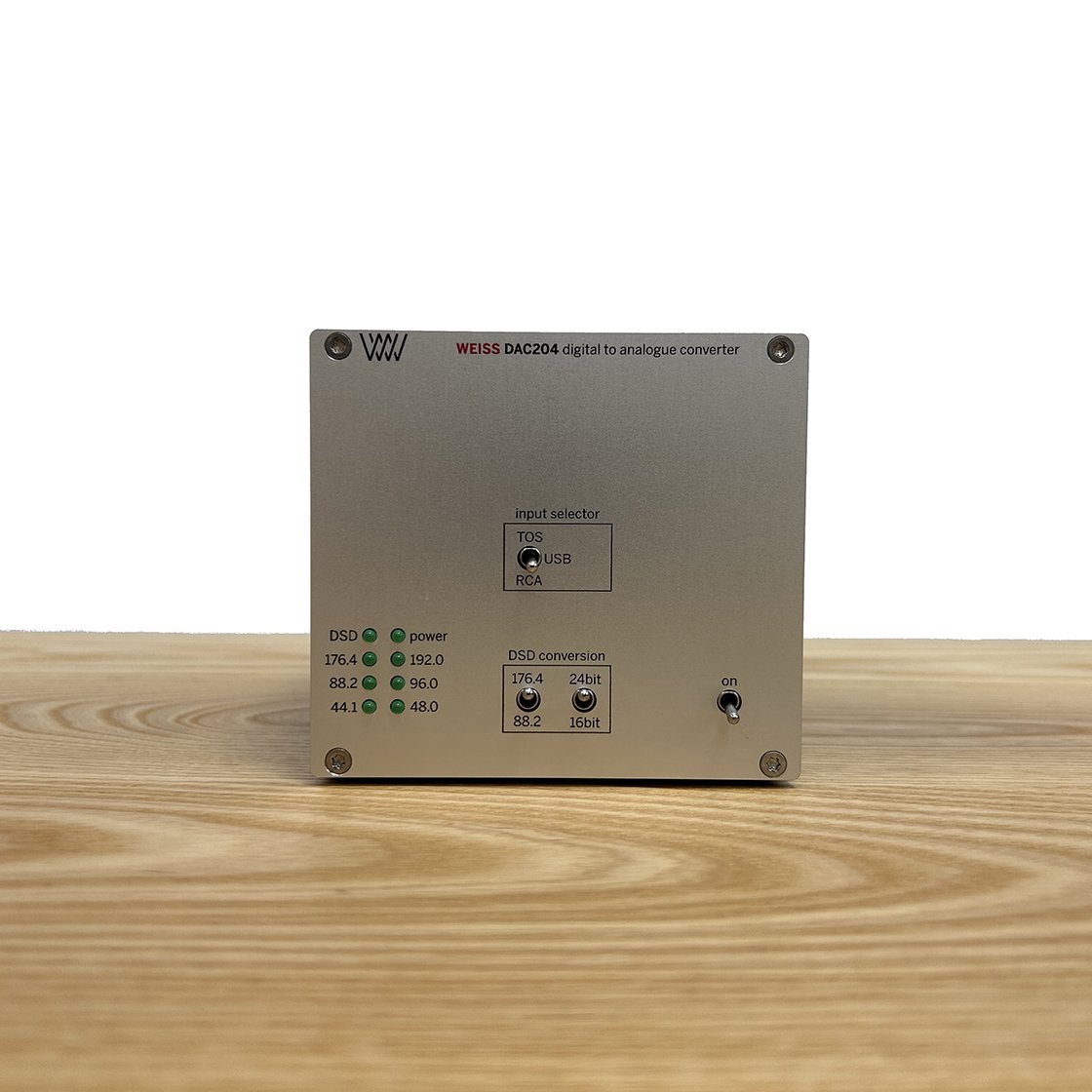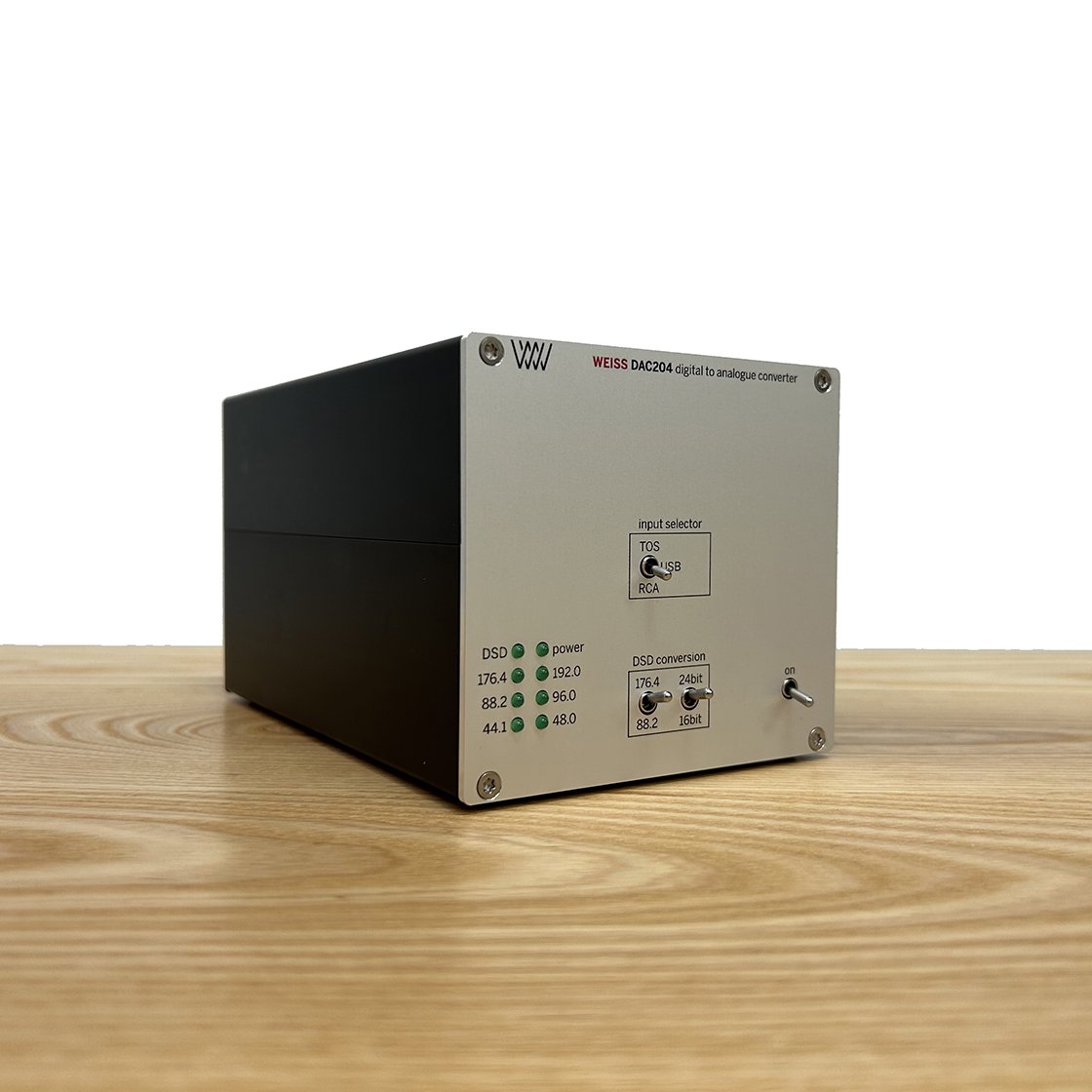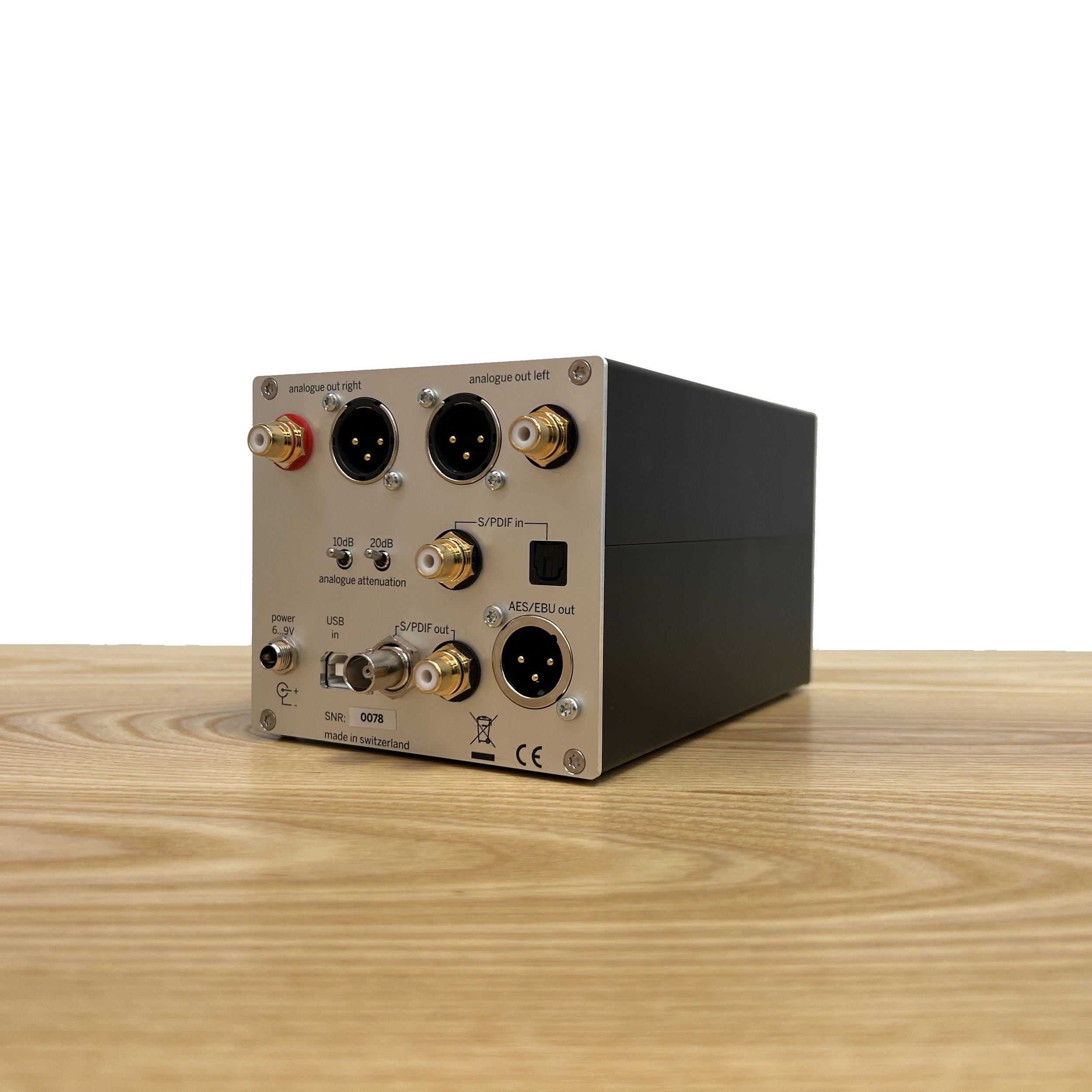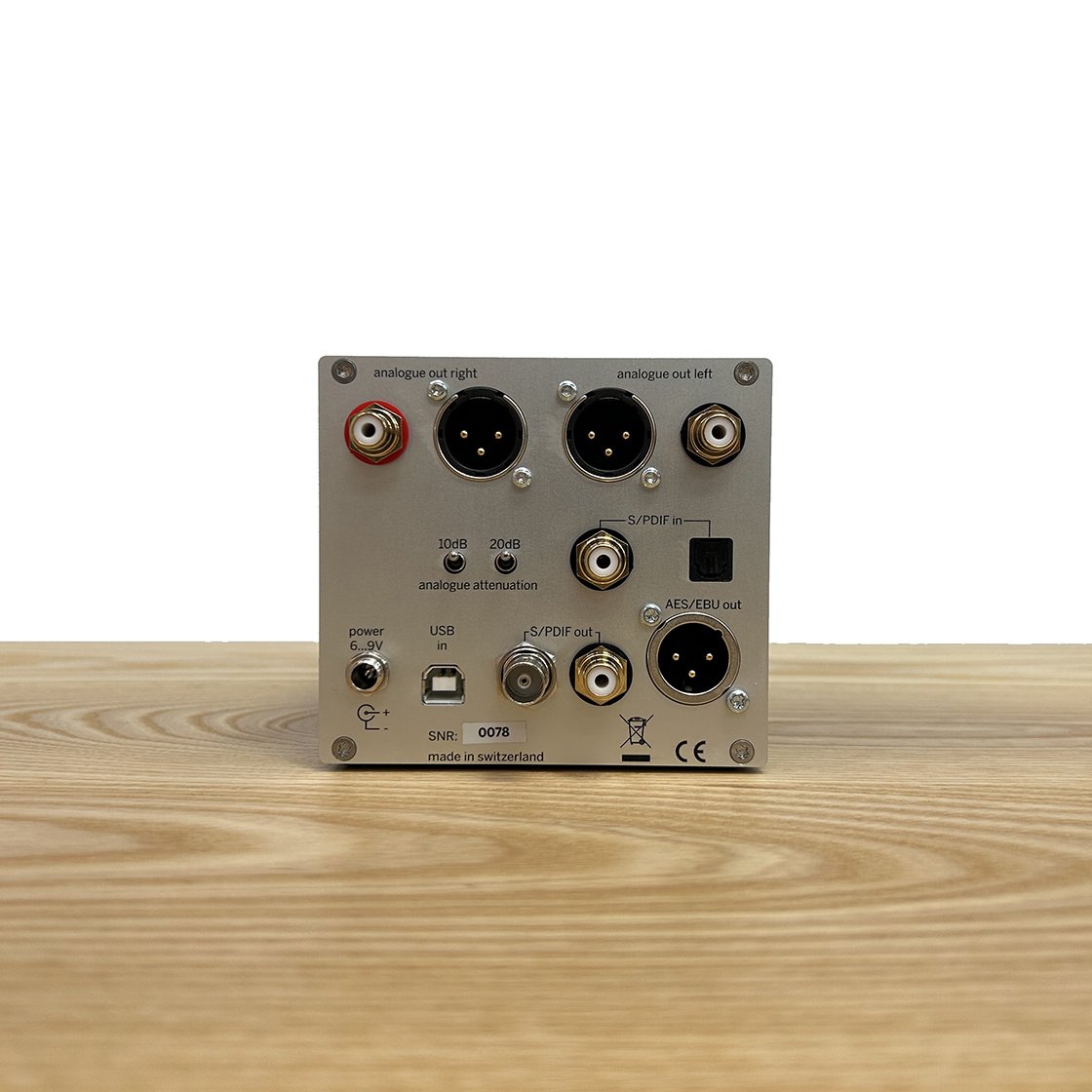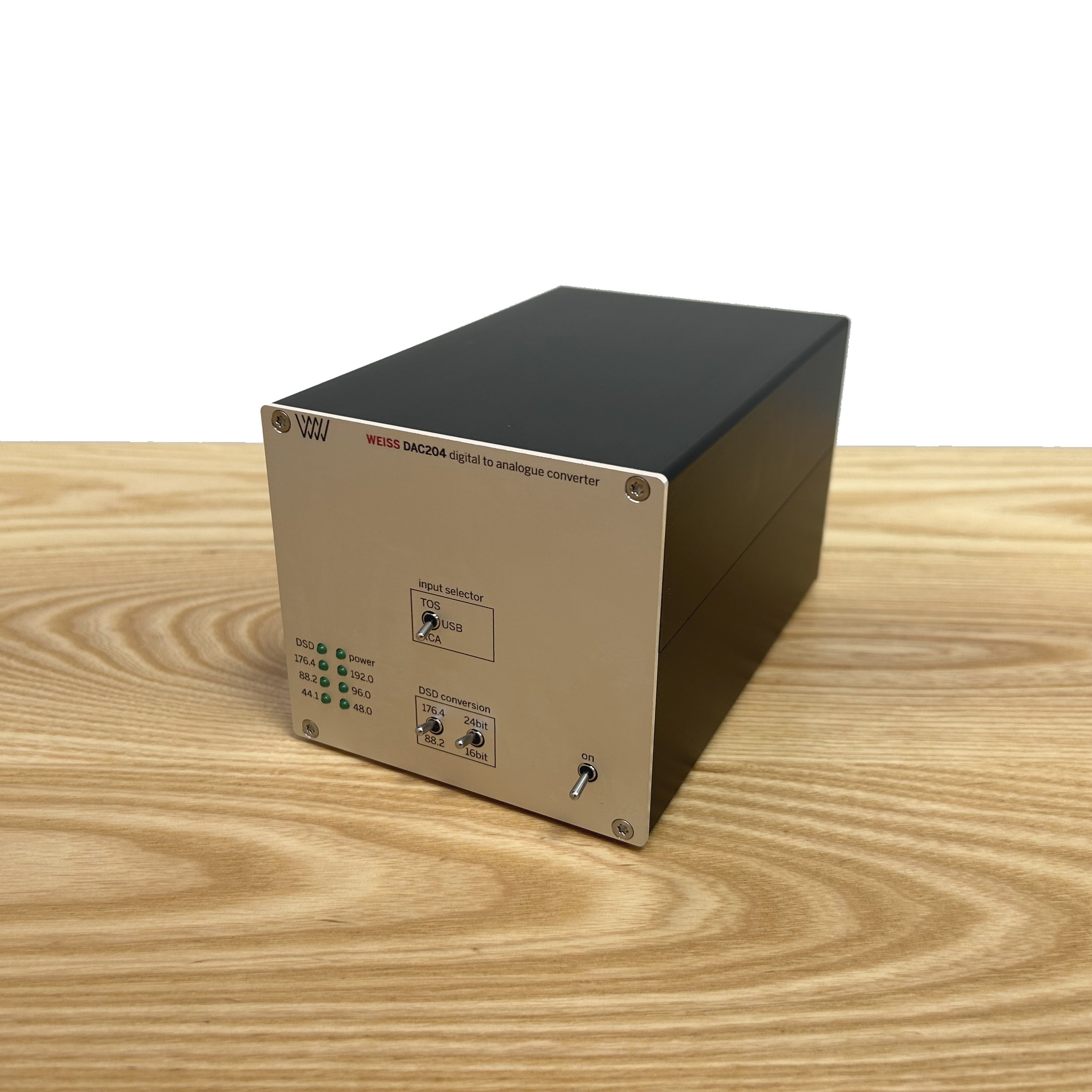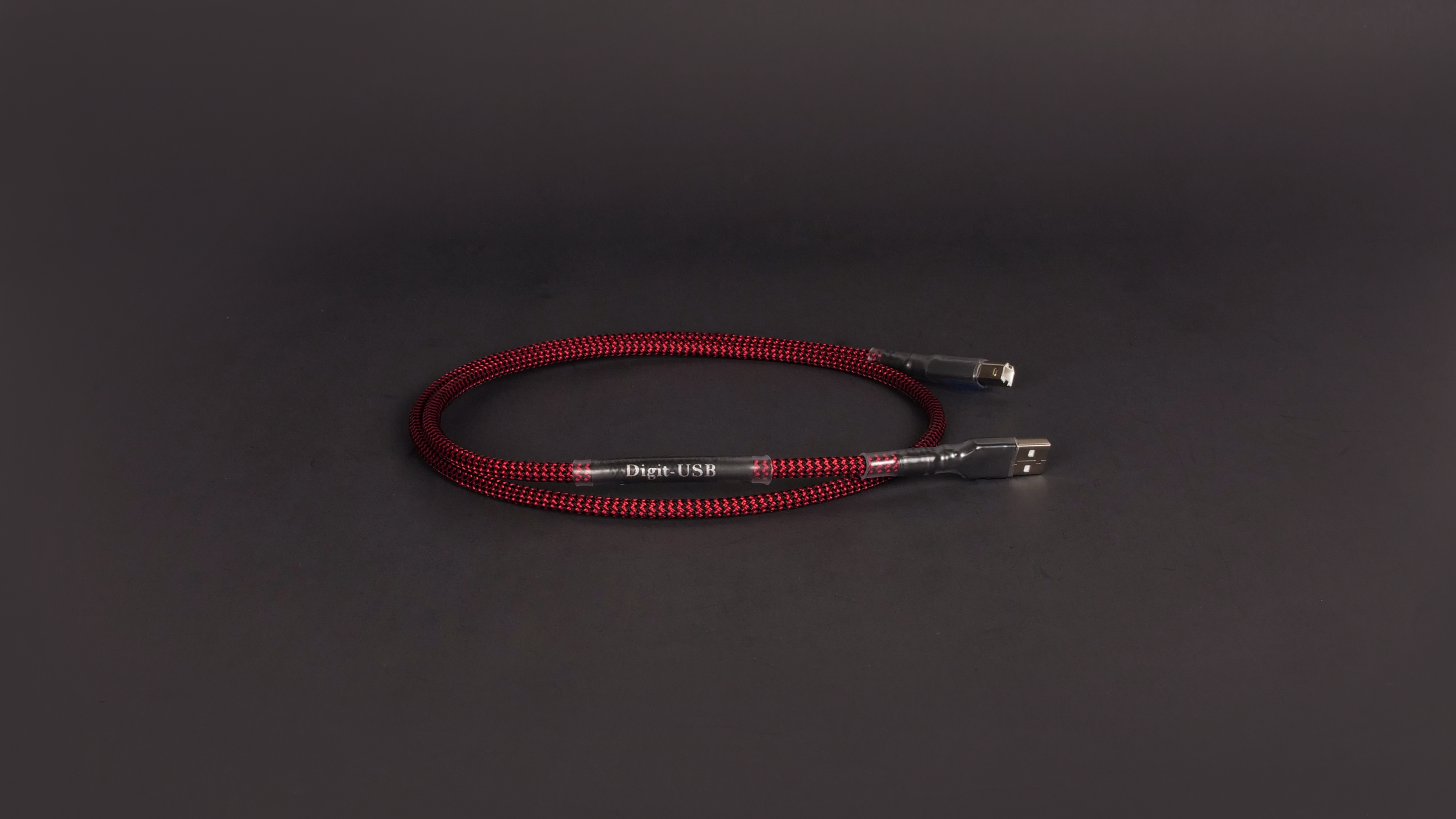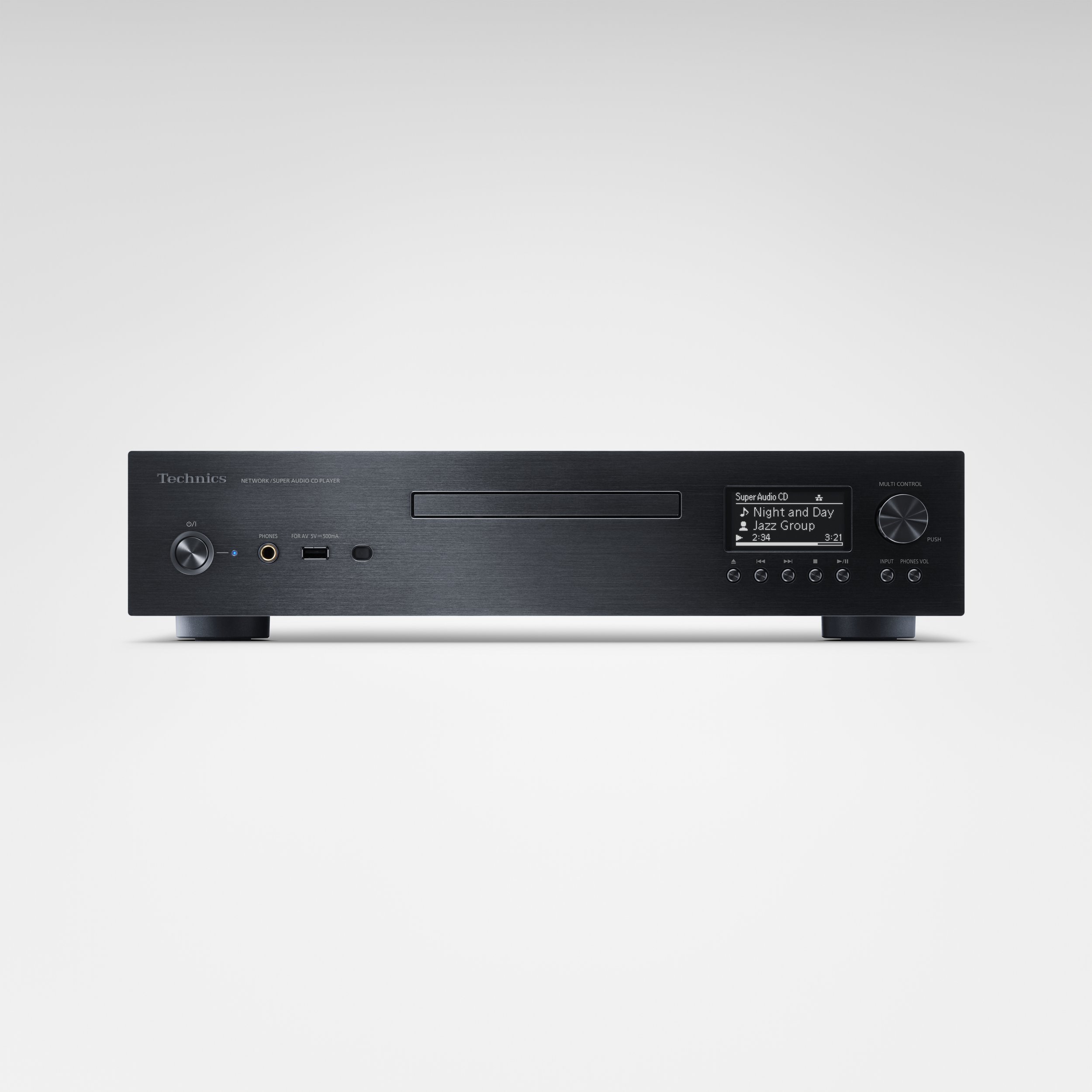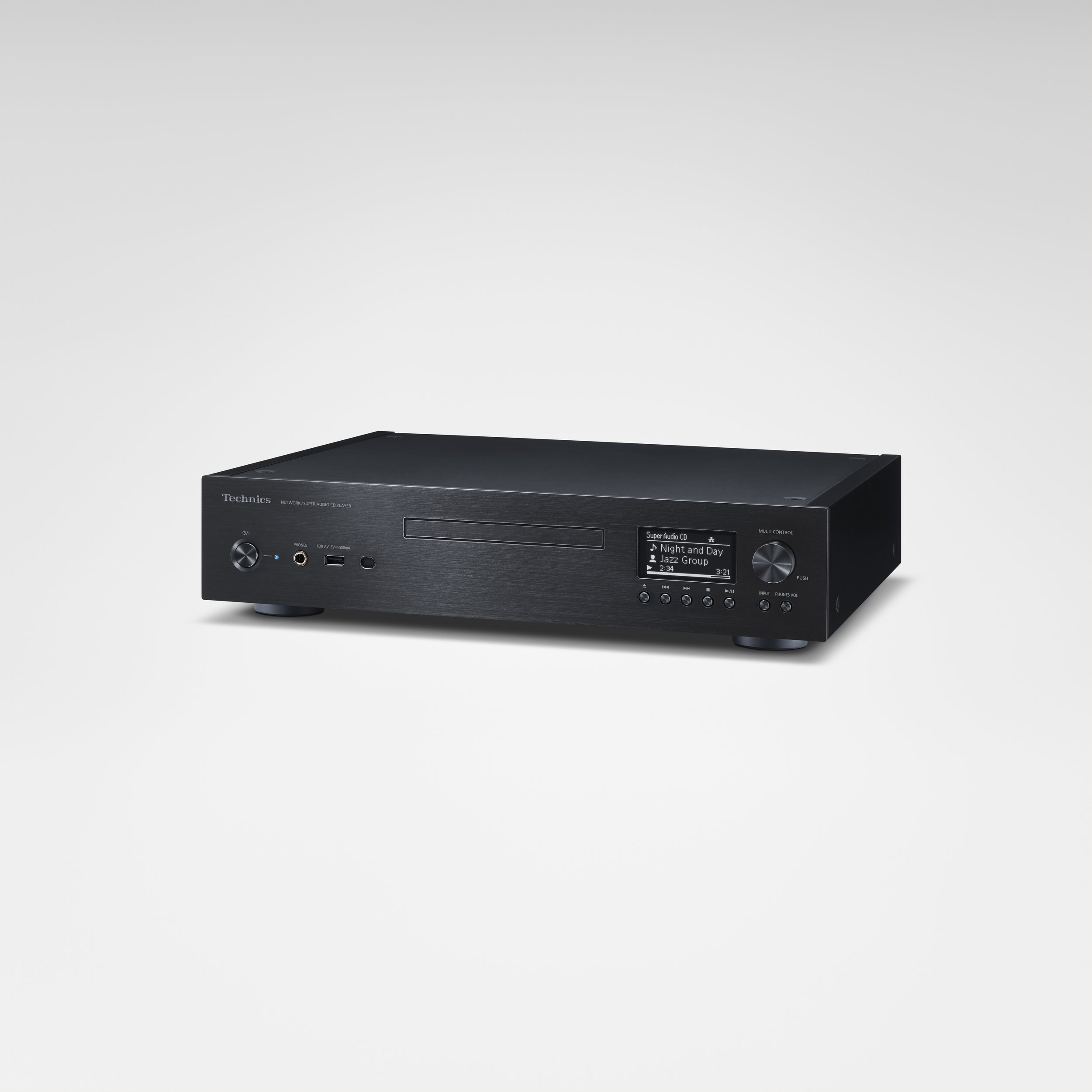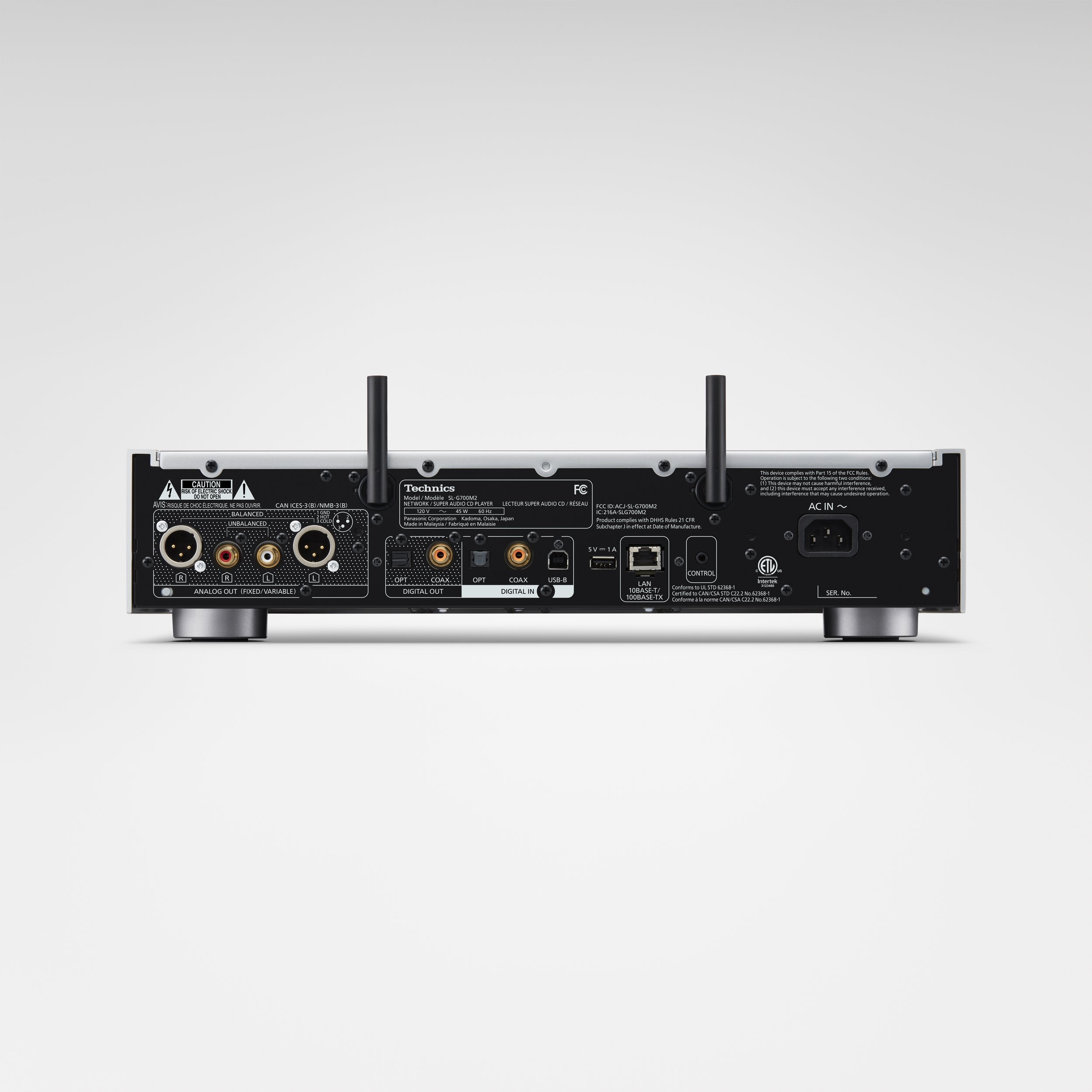Weiss DAC501
Accurate and Adjustable
The Weiss DAC501 is not only one of the best digital-to-analog converters available on the market today, offering an accurate and soulful presentation of the audio.
It also includes user-configurable settings, from room EQ and de-essing to crosstalk cancellation, dynamics compensation, loudness control, and even vinyl emulation.
HIGH CONNECTIVITY
The Weiss DAC501 comes with digital inputs in numerous formats and has both balanced and unbalanced analog outputs. All standard sampling frequencies up to 384 kHz plus DSD x64 and x128 are supported.
Furthermore, the unit functions as a preamp, headphone amp, and streamer (UPnP/ROON).
Accurate and Adjustable
The Weiss DAC501 is not only one of the best digital-to-analog converters available on the market today, offering an accurate and soulful presentation of the audio.
It also includes user-configurable settings, from room EQ and de-essing to crosstalk cancellation, dynamics compensation, loudness control, and even vinyl emulation.
HIGH CONNECTIVITY
The Weiss DAC501 comes with digital inputs in numerous formats and has both balanced and unbalanced analog outputs. All standard sampling frequencies up to 384 kHz plus DSD x64 and x128 are supported.
Furthermore, the unit functions as a preamp, headphone amp, and streamer (UPnP/ROON).
Accurate and Adjustable
The Weiss DAC501 is not only one of the best digital-to-analog converters available on the market today, offering an accurate and soulful presentation of the audio.
It also includes user-configurable settings, from room EQ and de-essing to crosstalk cancellation, dynamics compensation, loudness control, and even vinyl emulation.
HIGH CONNECTIVITY
The Weiss DAC501 comes with digital inputs in numerous formats and has both balanced and unbalanced analog outputs. All standard sampling frequencies up to 384 kHz plus DSD x64 and x128 are supported.
Furthermore, the unit functions as a preamp, headphone amp, and streamer (UPnP/ROON).
Digital Signal Processing
The DAC501 uses a built-in digital signal processing (DSP) chip for its audio processing. These algorithms are included:
Room Equalizer – to suppress room modes for more accurate bass reproduction.
Creative Equalizer – a tone control with low boost/cut, high boost/cut, and mid boost/cut. Very useful to correct those recordings which do not quite sound right.
De-Essing – the automatic removal of overly bright sibilances from human voices. The sibilance effect can be more or less pronounced depending on your speakers or room acoustics.
Constant Volume – adjusts the audio volume (loudness) to a constant value across all tracks played. Useful for “party mode” when the volume control should stay untouched.
Vinyl Emulation – get that special sonic character of a record player based playback chain. We also employ an emulation of the DMM-CD procedure offered by the Stockfisch label.
Crosstalk Cancelling (XTC) – for the playback of dummy head recordings or live recordings via speakers for an incredible live sensation. Dummy head recordings usually are listened to via headphones because they only work properly if the left channel goes to the left ear only and the right channel to the right ear only. With speakers this is difficult to achive as the left channel goes to the left and the right ear. But with some clever signal processing of the speaker channels is is possible to suppress the crosstalk, i.e. the audio going from the left speaker to the right ear and vice versa. If that works properly then the recording sounds as if one would be in the space where the recording has taken place. All the reverberation and 3D representation of the sound sources is there.(For speaker based playback only.)
Loudness Control – a listening volume dependent equalization of the audio.
Headphone Equalizer – to adapt any headphone to the listener’s ears in terms of frequency response.
Crossfeed – to emulate a speaker based playback impression on headphones.
Digital Inputs
There are a total of five inputs:
AES/EBU or S/PDIF via XLR, Toslink and RCA sockets.
UPnP/DLNA via Ethernet.
USB.
Roon Ready.
Accepted formats: PCM 44.1kHz up to 384 kHz, DSD 64x / 128x.
Future formats can be accommodated via software updates.
Analog Outputs
Line out unbalanced on RCA connector.
Line out balanced on XLR connector.
Headphone out on 1/4″ jack.
Discrete output stages for both line and headphone outputs are employed.
The output levels can be set in a coarse manner with four steps to adapt for the amplifier or headphone connected. The levels can be set independently for line and headphone outputs. No sound degrading servo mechanisms are used.
Power Supply
A powerful non-switching power supply is used. All sensitive voltages have their own regulators which are separated between left and right channels. The result is an analog output free of “digital noise” and channel crosstalk.
The power switch activates a semiconductor relay which only switches on or off at zero crossings of the mains voltage. This assures a glitch-free power switching. The two mains transformers are toroidal types.
Mains voltage selection is done automatically by measuring the mains voltage before power is applied to the rest of the electronics.
Dimensions
IR Remote Control
Depth: 2.1 cm / 0.83 inches
Width: 4.5 cm / 1.78 inches
Height: 16.6 cm / 6.53 inches
DAC501
Depth: 30 cm / 11.8 inches
Width: 18.8 cm / 7.4 inches
Height: 6.6 cm / 2.6 inches
Height with feet: 7.2 cm / 2.83 inches

